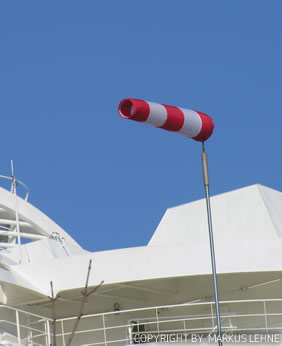
Renewable energy is generally defined as energy that comes from resources which are continually replenished on a human timescale such as sunlight, wind, rain, tides, waves and geothermal heat (source Wikipedia). Renewable energies which contribute to ship propulsion, such as wind, solar and waves will be covered.
Wind energy systems use the wind to generate external forces on the ship. There are various sorts of wind power systems: Flettner rotors, hard and soft sails. Dependent on the size these systems generate forces easing propulsion of a vessel. The characteristics of the wind systems are needed to explore the main gains. For accurate assessment of the gains the routing and drift of the vessel need to be considered. The currently known payback time of simplified assessments come to around 6 to 7 years. The size of the wind energy systems has a relation to the safety of the vessel as well (handling of these systems in storms needs to be considered).
Today wind systems are not generally used but in general the application will be of interest to:
- Ships with low ship speeds
- Ships with longer sea routes
- Ships with clear and large deck areas
Solar panels can be fitted on deck and deliver electrical power to reduce overall ship energy consumption. These systems need their space. The amount of energy which can be delivered is quite low. Today some cruise vessels have installed solar panels on their ships but at limited power.
Scope of this work package:
- Wind propulsion system such as kites, Flettner rotors, Dynarigs or foldable wings
- Solar panels for reduction of energy consumption
- Use of wave energy
The model of the wind systems will be forces as function of the relative wind speed. These forces will reduce the resistance and thus increase the ship speed but also have an effect on the relative wind speed.








